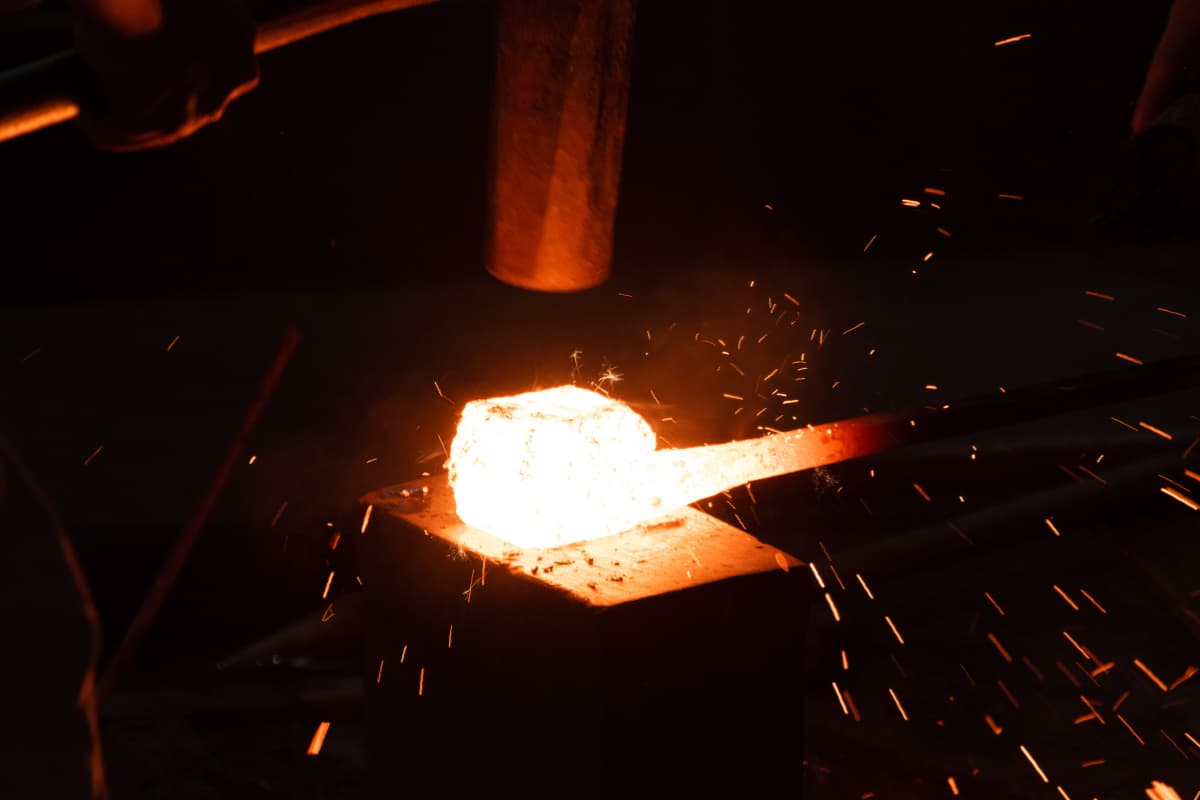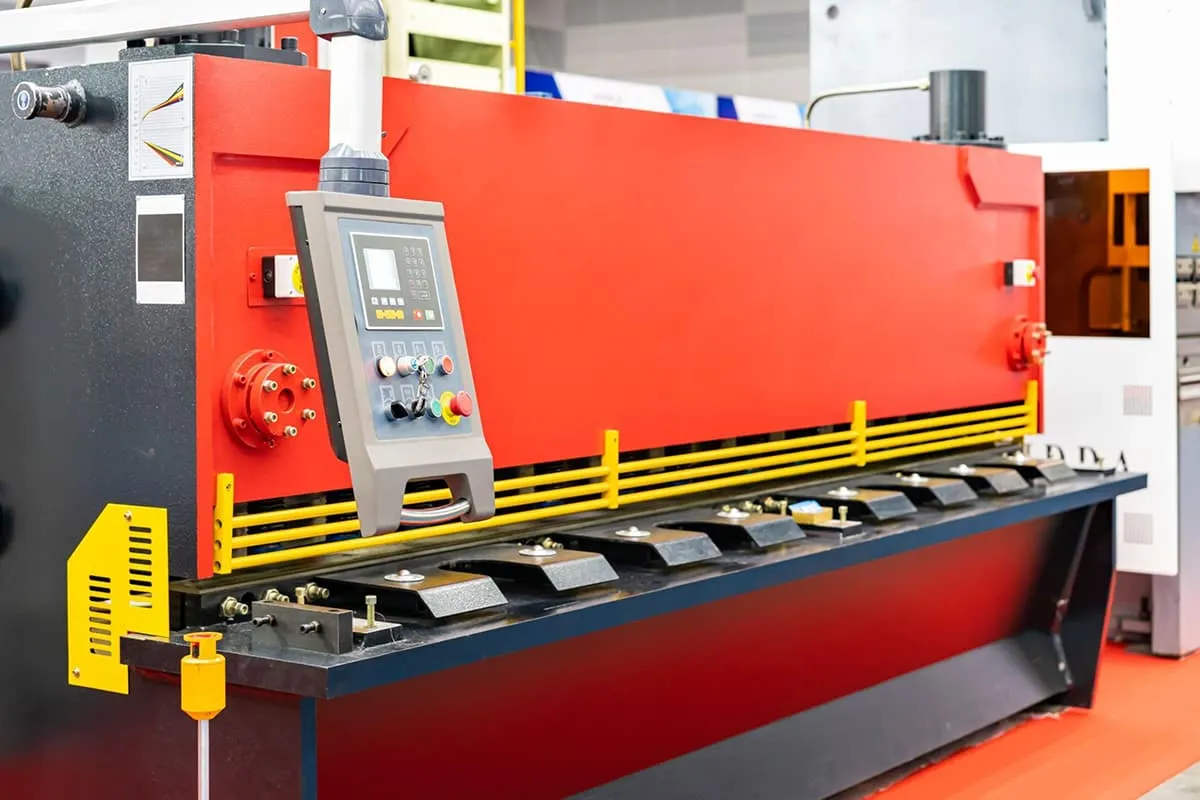
1. Forging of carbon structural steel
The carbon content in carbon structural steel is low, with a wide forging temperature range; when heated to high temperatures, it has low deformation resistance, good plasticity, and is easy to forge. Whether forging from steel ingots or billets, there are no issues in ensuring the required shape of the forgings. Negligence and carelessness in production operations are the main reasons for the waste products of this type of steel forging.
2. Forging of Alloy Structural Steel
Alloy structural steel, due to its low carbon content and not high alloy element content, has good plasticity, thermal conductivity, low deformation resistance, and a wide forging temperature range, with no special requirements for heating and forging.
Special requirements. The high-temperature deformation resistance of many low-alloy steels is the same as that of carbon structural steels. However, in the initial forging, because the initial structure has not been destroyed, the forging force should be smaller. Once the steel has higher plasticity, a larger forging force can be used for forging.
The phenomenon of oxide scale adhesion on the surface of nickel-chromium structural steel is very serious, especially for those with low carbon content, and sometimes a thin and tough oxide layer can appear, which must be carefully removed during the forging process.
3. Forging of Carbon Tool Steel
Common carbon tool steels include T7, T8, T10, T12, etc., with a carbon content of 0.7% to 1.2% (mass fraction), suitable for manufacturing punches, chisels, broaches, die punches, and shear blades. These steels have higher hardness and strength but poorer plasticity and general forgeability. Therefore, pre-forging is necessary, especially for those with higher carbon content. The plasticity of this steel deteriorates significantly with the decrease in temperature.
The initial forging temperature is generally between 1100 and 1150°C, and the forging temperature range of carbon tool steel is smaller than that of carbon structural steel. The higher the carbon content, the lower the heating temperature should be; otherwise, it is easy to cause overheating or burning. Therefore, sometimes it is necessary to increase the number of heats when billeting this steel. The initial forging temperature of T12 steel should not exceed 1100°C, otherwise, the grains will coarsen, and it is easy to crack during forging.
When forging carbon tool steel, the hammering should go from light to heavy, with an appropriate forging ratio (generally, Y=2~4): the flipping should be even, sharp edges should be flattened at any time to avoid corner cracks: when the temperature is too low, forging should be stopped, reheated, and then forged again. After forging, air cool to about 700°C, then bury in sand ash for cooling to prevent the forging from precipitating coarse network carbides.
When forging carbon tool steel, if the hammer is stopped for a long time, causing the steel to be heated for an extended period at high temperatures, the depth of the decarburization layer will increase. If the steel is slowly cooled after high-temperature heating, the carbides may graphitize, becoming weak points within the steel, leading to scrap.
4. Forging of Alloy Tool Steel
The forging of low-alloy tool steel is the same as that of carbon tool steel. To prevent the formation of network carbides, the lower the final forging temperature, the better (close to the lower critical temperature), while ensuring that the forging is quickly cooled below the critical temperature to prevent carbide re-aggregation and growth.
Rapidly cool to below the critical temperature for insulation to prevent carbide from re-aggregating and growing.
Alloy tool steel with high carbon content and alloy composition, its billet and steel forging are the same as high-speed steel forging.
5. Forging of spring steel
Spring steel is used for forging various springs. Spring steels are divided into carbon spring steel (carbon mass fraction of 0.6% to 0.9%) and alloy spring steel (carbon mass fraction of 0.5% to 0.7%).
Spring steel has a high carbon content and contains alloy elements such as chromium, manganese, and silicon, with poor plasticity, high deformation resistance, and a forging temperature range and forgeability similar to carbon tool steel. The general processing steps for springs include end forging of rolled materials and spring winding.
During heating, to prevent defects such as grain coarsening and decarburization, the heating temperature and holding time must be strictly controlled, with a heating temperature not exceeding 950°C. The surface of the forged workpiece should not have defects such as cracks, folds, and decarburization, to ensure the spring has high fatigue strength.
6. Forging of bearing steel
Common bearing steels include grades GCr4, GCr15, and GCr15SiMn. The average carbon mass fraction of bearing steel is about 1%, and the chromium mass fraction is 0.6% to 1.5%, commonly used for manufacturing bearing rings and balls.
Due to the high carbon content of bearing steel, chromium carbides in a network form exist in the cast state, with severe segregation, thus the plasticity is low, the strength is high, and the deformation resistance is great, making it easy to crack during forging. Bearing steel has poor thermal conductivity, with the highest forging temperature about 1100°C. During heating, it should be loaded at low temperature and slowly heated to 800°C before it can be rapidly heated.
The focus of forging bearing steel is to break up carbides, homogenize the structure, and refine the grains. The process requires a larger forging ratio (Y = 4 to 6) and involves 1 to 2 times of upsetting. The last heat should avoid critical deformation: at 1100°C, the deformation amount should be greater than 20%; at 900 to 1000°C, the deformation amount should be > 15%; at 800 to 850°C during finishing, the deformation amount < 10%. The final forging temperature should be controlled at 800 to 850°C.
After forging, rapidly (spray) cool to 600 to 650°C, then cool in sand to avoid the formation of white spots or coarse network carbide structures. To obtain spheroidized carburized bodies, spheroidizing annealing is required after forging. If network carbides appear in the forging, normalizing should be performed before spheroidizing annealing.
7. Forging of high alloy steel
Due to the presence of multiple alloy elements (total mass fraction greater than 10%) and higher carbon content (excluding stainless steel), high alloy steel has a complex structure, lower thermal conductivity than general alloy steel and carbon steel, poor plasticity, and is prone to cracking. Some high alloy steels also tend to have grain growth during heating, causing overheating and burning. When forging high alloy steel, the following characteristics must be noted:
1) Surface defects should be removed before heating the ingot to prevent further enlargement of defects during heating and forging. Surface defects can generally be removed by grinding with a grinding wheel, and for some steel types, methods such as turning and planing are also needed.
2) Heating should be strictly according to the heating specifications. Since high alloy steel has particularly low thermal conductivity at low temperatures and poor plasticity, it should be heated slowly during low temperatures and structural transitions; at high temperatures, as thermal conductivity has increased and plasticity has increased, it can be heated rapidly.
3) Strictly control the forging temperature range. The initial forging temperature of high-alloy steel is generally lower than that of carbon structural steel, and the final forging temperature is higher than that of carbon structural steel. The selectable range of forging temperature for general carbon steel is 350 to 400°C, while for some high-alloy steels, it is only 100 to 200°C.
Therefore, the forging temperature range of high-alloy steel is relatively small, and actions during forging must be swift. Never forge below the final forging temperature to avoid cracking. To accurately control the final forging temperature, use a high-temperature gauge to measure at any time.
4) The cast structure of high-alloy steel has severe columnar crystals and poor plasticity at high temperatures. Therefore, when starting to forge steel ingots, light and fast hammering should be used, followed by heavy strikes to break up coarse carbides and columnar crystals, improving plasticity; light forging should be done again near the final forging temperature.
5) When elongating high-alloy steel, it should be fed uniformly, starting from the riser end of the ingot, controlling each forging strike to advance 3/5 to 4/5 of the anvil width; frequent feeding and turning should be practiced, avoiding repeated forging in one place. If the feeding amount varies, it will cause uneven deformation and easily produce cracks.
6) The distribution of network carbides in high-alloy steel is extremely uneven, and the grains are coarse, so large-tonnage forging equipment and a larger forging ratio should be used, and the forging methods of upsetting and elongating alternately should be applied to refine and evenly distribute the carbides.
7) When cracks appear during the forging process, they should be promptly removed to prevent further expansion of the cracks. If the cracks are severe, forging should be stopped immediately.
8) When elongating high-alloy steel billets on a flat anvil, the core often gets torn. Therefore, the billet can be elongated in a V-shaped lower anvil and upper and lower dies (drop forging) to change the core from being under tension to being under compression.
9) When punching high-alloy steel billets, to prevent the hole walls from cracking, the punch must be preheated to around 300°C first.
10) High-alloy steel should be cooled slowly after forging.









